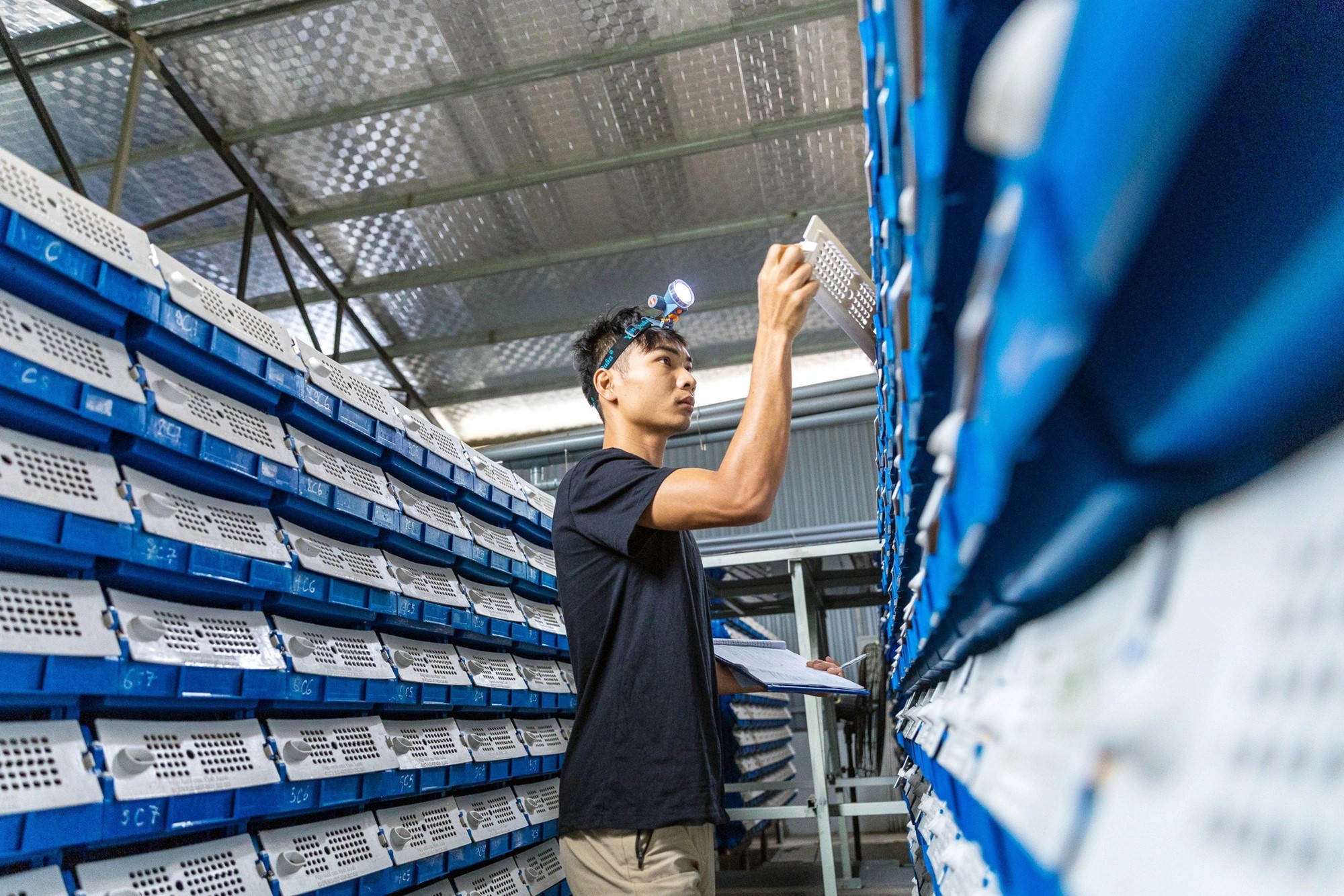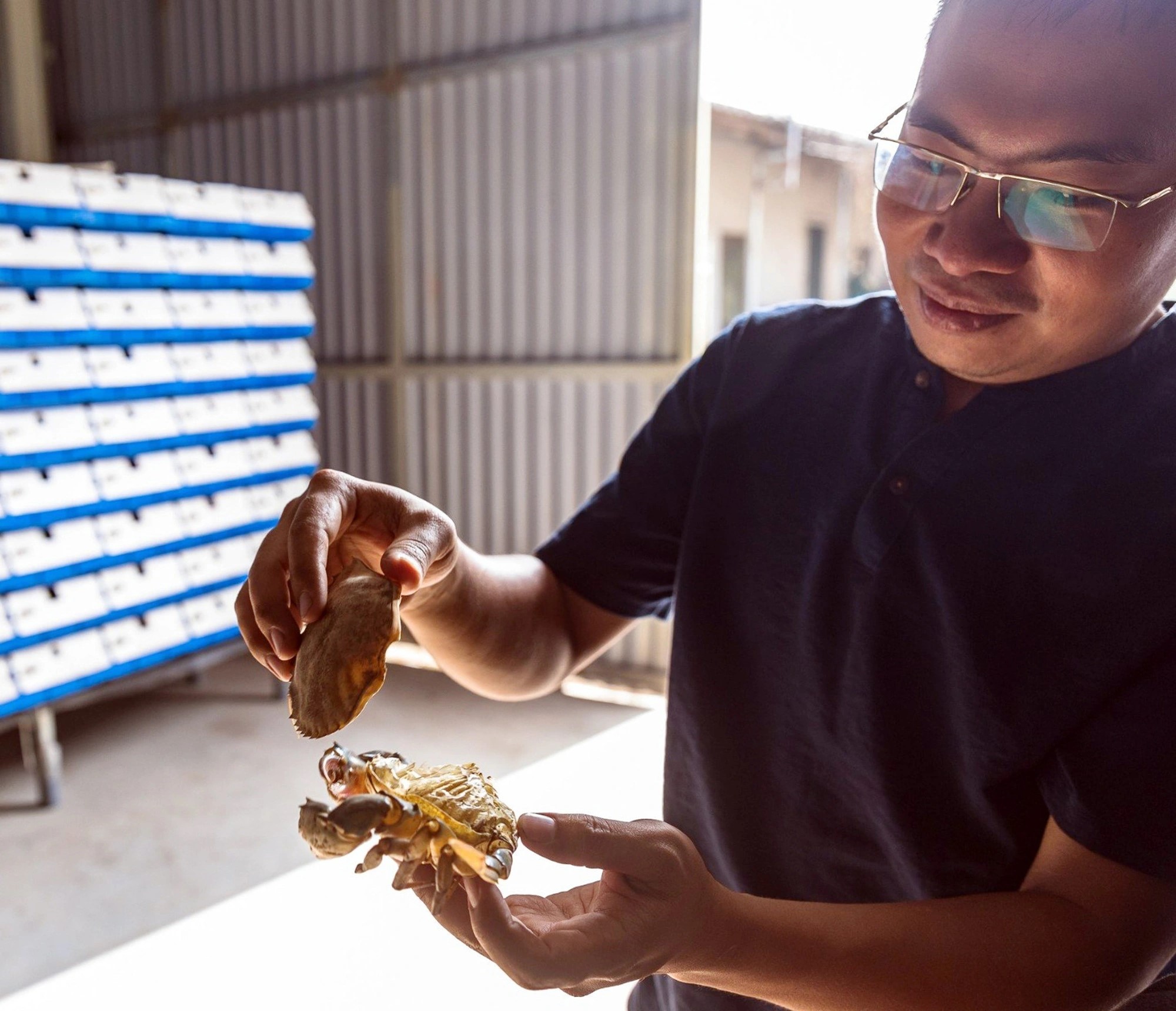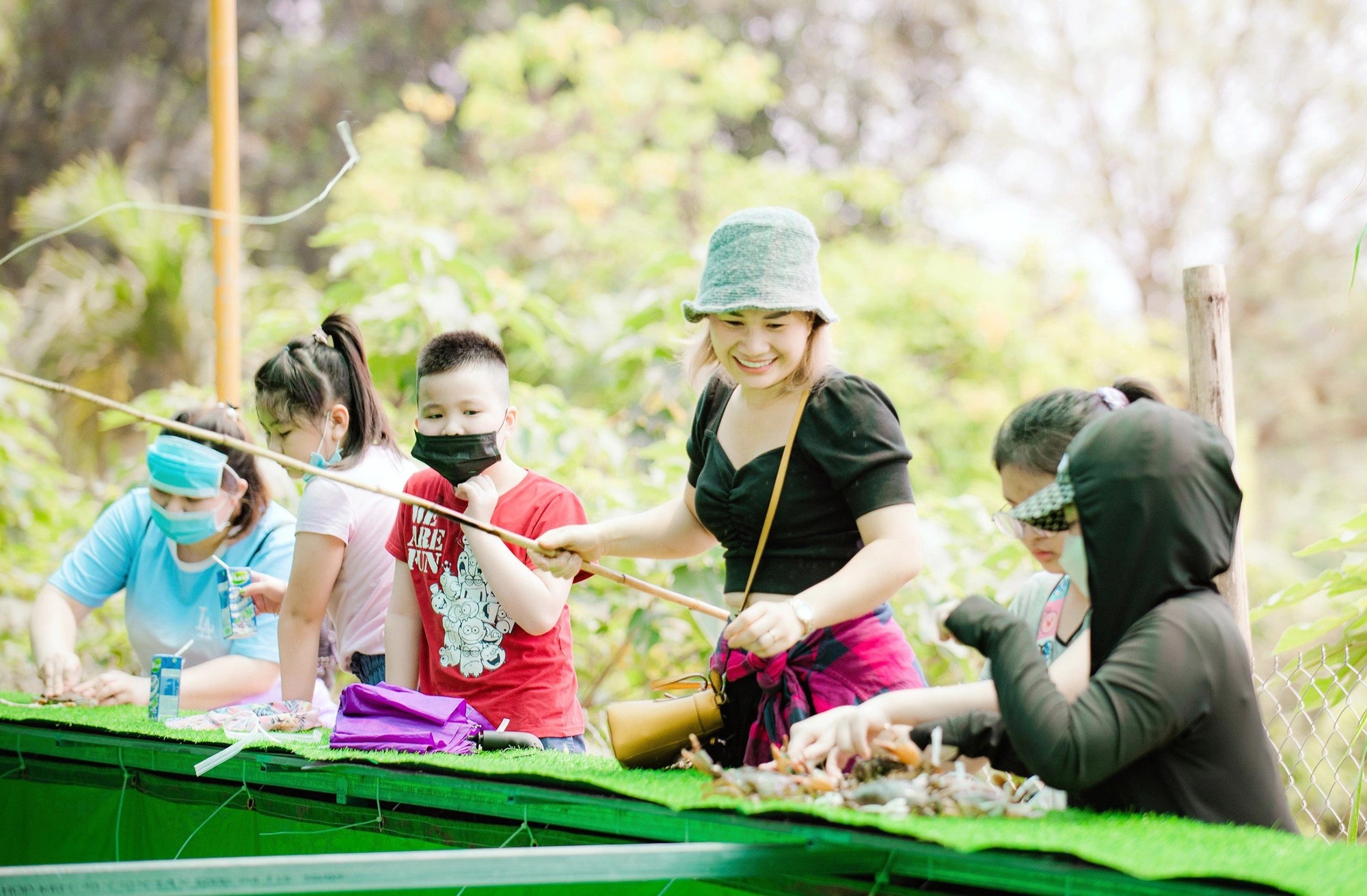In Thanh Tri District, Hanoi, crab farmer Le Duc Canh has introduced an innovative method for raising saltwater crabs: housing each baby crab from southern Vietnam in its own individual enclosure and providing it with the necessary space to get acclimated to the capital city's northern environment.
Canh’s crab farm is located along the Hong River in Hanoi.
Each crab on his farm originates from Ca Mau Province, which is the southern tip of Vietnam and renowned for producing some of the best saltwater crabs in the Southeast Asian country.
After being transported to the capital, the crabs are raised until they reach market size.
Training crabs
Canh’s crab farm is climate-controlled to maintain a temperature of 25-27 degrees Celsius at all times, regardless of the weather outside.
Huynh Trong Luc is an engineer on Canh’s farm.
His job is to feed the crabs, make sure they are mentally stimulated, track when they molt, and identify which crustaceans are ready to be sold.
Each morning, Luc begins the workday by checking on each crab’s individual 'home,' using a headlamp to peer inside and a notebook to track its health, along with any other important observations.
He repeats this process three times a day, seven days a week.
The farm itself resembles an apartment building with each crab confined to its own unit in order to keep it from fighting others.
The 'rooms' themselves are numbered and feature a hole via which Luc observes and feeds the crabs inside.
“It was challenging for us to learn how to raise our first crabs because we had to figure out how to help them adapt to Hanoi’s environment,” Luc said.
"We maintain a close eye on our crabs to determine how they are eating and sleeping and if they are strong or weak.”
|
|
| Le Duc Canh holds a soft-shell crab and describes how the shell changes throughout the creature’s life in Hanoi. Photo: Danh Khang / Tuoi Tre |
Finding customers
Raising those crabs is only half the battle. Finding customers can be even more difficult.
“Do you know much about the market for crabs? You should learn how to sell them before learning how to raise them,” Canh often finds himself telling would-be crab farmers.
His crab farming journey began with failure because both meat crabs and fat crabs seemed ill-suited to Hanoi’s relatively chilly climate.
"Our country has long beaches, so the people in coastal provinces are able to easily catch sea crabs or raise march crabs,” Canh said.
“It would be impossible for me to compete on price if I raised the same species as them.
"That’s why I farm this specific species of soft-shell crab, as no one else does.”
A key challenge in soft-shell crab farming is determining the optimal harvest time.
Crabs molt several times a year, and their shells harden within hours after molting.
Farmers like Canh must vigilantly monitor the crabs to ensure they are harvested while the shells remain soft.
When raised properly, Canh's crabs can be sold for VND800,000-900,000 (US$32-35) per kilogram.
"You need to understand market dynamics and customer preferences,” Canh said.
He noted that preferences vary significantly between regions, with Ho Chi Minh City clients favoring smaller to medium-sized crabs and those in Hanoi preferring larger crustaceans.
|
|
| Tourists catch crabs at Le Duc Canh’s farm in Hanoi. |
Learning from failure
Before launching his crab farm, Canh worked in education and founded a network of high-end kindergartens in Hanoi.
Unfortunately, he was obliged to close the schools because of COVID-19. It was during this time that he came up with the idea to farm crabs.
At the time, few crab farmers had set up shop in northern Vietnam due to the cold climate.
Having studied business in Singapore, Canh was aware of the crab-raising model used in Southeast Asia and began testing a similar strategy in Vietnam.
"We had to adjust the conditions that allow saltwater crabs develop healthily," Canh explained.
"For example, [Vietnam’s] seas differ from those of other countries.
"In addition, our climate and the available species of crabs differ."
"We failed several times and lost a lot of money."
Canh's biggest setback came when he lost over VND100 million (US$4,004) to a batch of crab seeds that failed to adapt to Hanoi's climate.
“Although the crab seeds were healthy in the first week, they began to perish over the following two to three weeks,” Canh recounted.
Like us on Facebook or follow us on X to get the latest news about Vietnam!





















































